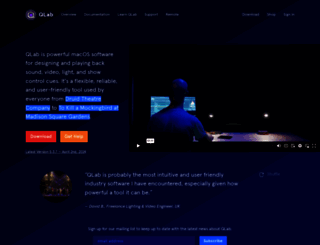QLab
Page Load Speed
996 ms in total
First Response
50 ms
Resources Loaded
688 ms
Page Rendered
258 ms

About Website
Visit qlab.app now to see the best up-to-date QLab content for United States and also check out these interesting facts you probably never knew about qlab.app
QLab is sound, video, and lighting control for macOS. It’s used by everyone, big and small.
Visit qlab.appKey Findings
We analyzed Qlab.app page load time and found that the first response time was 50 ms and then it took 946 ms to load all DOM resources and completely render a web page. This is quite a good result, as only 15% of websites can load faster.